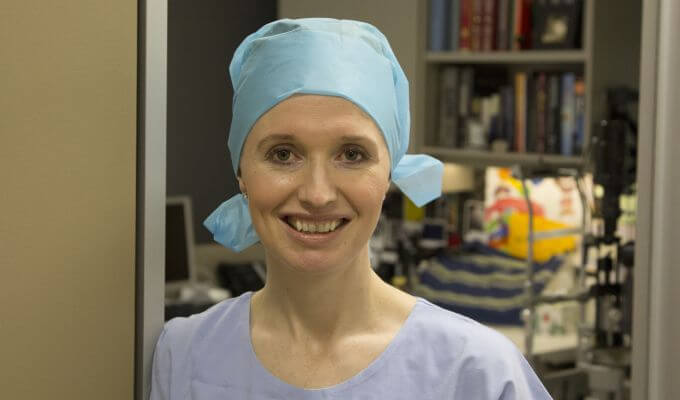The 6-Minute Rule for Conjunctivitis
Table of ContentsSee This Report on Adult CataractThe Facts About Paediatric Ophthalmology RevealedFacts About Emergency Eye Problems UncoveredLittle Known Questions About Comprehensive Ophthalmology.
Ophthalmologists are medical physicians that focus on the diagnosis and also treatment of eye as well as vision troubles. What is the distinction between an eye doctor as well as an optometrist, after that? What regarding lens? These three sorts of eye treatment experts have rather similar-sounding names as well as overlapping task summaries. It can be puzzling in the beginning look.They can not provide eye exams, compose prescriptions, or diagnose or deal with eye troubles. can analyze your eyes, test your vision, prescribe glasses or contacts, and identify and also treat several eye problems and conditions. They are not medical physicians or doctors however can suggest particular eye-related drugs (https://drcrlinecatt.bcz.com/2022/07/03/not-known-facts-about-paediatric-ophthalmology/). additionally supply eye tests, vision screening, and prescriptions for glasses or contact lenses.

Ophthalmologists identify and also treat injuries, infections, illness, as well as conditions of the eye. Therapies can consist of drug taken by mouth (by mouth) or topically (in the eye), surgical treatment, cryotherapy (freeze treatment), and also chemotherapy (chemical treatment). Eye doctors go to medical institution after that get several years of specialty training in the medical and medical treatment of the eye.
8 Simple Techniques For Adult & Paediatric Eye Surgery
As they are the only physician that can deal with all eye problems, eye doctors see a wide range of eye problems, consisting of: Just how commonly should you have an eye test? What are symptoms that suggest you may have an eye issue that needs to be examined by an ophthalmologist? The American Academy of Ophthalmology advises: As youngsters's eyes are expanding as well as altering rapidly, they need to receive a vision screening.
Grownups that have healthy and balanced eyes and also superb vision need to have 4 comprehensive eye tests: one in their 20s, two in their 30s, and also one at age 40. These examinations might enable the eye doctor to capture an eye condition or vision modifications at an early stage. By the time you observe signs, you may already have some vision loss (COMPREHENSIVE OPHTHALMOLOGY).

People that go to a higher risk of eye illness might require to get an eye exam more frequently. This can include people with diabetes, hypertension, or a household background of eye problems - ADULT CATARACT. After read this article age 65, your eyes must be inspected every one to two years. No matter age, people that use calls ought to have a total eye exam every year.
Your sight depends on seeing the right eye doctor at the best time. When it's time to "get your eyes checked," make certain you are seeing the right eye treatment professional for your requirements.
The Facts About Paediatric Ophthalmology Uncovered

is a clinical or osteopathic medical professional that specializes in eye and also vision care. Eye doctors vary from eye doctors as well as lens in their degrees of training and also in what they can detect as well as treat (https://www.livebinders.com/b/3111056?tabid=25b0c51f-a27a-541a-f4e0-316653efe04f). As a medical doctor that has finished university and also a minimum of 8 years of extra clinical training, an eye doctor is licensed to practice medication and surgical procedure.
Many eye doctors are likewise included in scientific research on the reasons as well as treatments for eye conditions and vision disorders. SUBSPECIALISTS: ADDED KNOWLEDGE AS WELL AS TRAINING FOR PARTICULAR EYE requires While ophthalmologists are trained to look after all eye problems and conditions, some Eye M.D.s focus on a certain area of medical or medical eye care.
She or he usually finishes 1 or 2 years of extra, a lot more in-depth training called a fellowship in among the main subspecialty locations such as glaucoma, retina, cornea, pediatrics, neurology and also plastic surgical treatment, as well as others. This included training and also knowledge prepares an ophthalmologist take treatment of even more facility or specific problems in specific areas of the eye or in certain teams of people.
An optometrist is not a clinical doctor. An optometrist gets a medical professional of optometry (OD) degree after finishing 4 years of optometry school, come before by 3 years or more years of university. They are licensed to exercise optometry, which mostly includes carrying out eye tests and also vision tests, suggesting and also giving rehabilitative lenses, spotting particular eye abnormalities, and also prescribing medicines for sure eye illness.
Not known Facts About Adult & Paediatric Eye Surgery
They utilize prescriptions provided by eye doctors or eye doctors, but do not check vision or compose prescriptions for aesthetic correction. Opticians are not permitted to detect or treat eye illness. Most of us depend on our vision in more ways that we may realize. Without healthy and balanced vision, our capability to function, play, drive and even recognize a face can be dramatically affected.
That's why it is so crucial to see an ophthalmologist for a complete medical eye exam by age 40, and also then as usually as recommended by your Eye M.D.
A full, medical eye exam by an Eye M.D. can be the very first action toward saving your view. Protruding of one or both eyes; Dark curtain or shroud that blocks your vision; Reduced vision, even if short-term; Diabetes mellitus; Altered vision; Dual vision; Excess tearing; Eyelid irregularities; Family history of eye disease; Halos (colored circles around lights); High blood stress; HIV or AIDS; Injury to the eye; Loss of peripheral (side) vision; Misaligned eyes; New advances (black "strings" or specks in the vision) and/or flashes of light; Pain in the eye; Thyroid disease-related eye troubles (Graves' condition); Uncommon red eye.